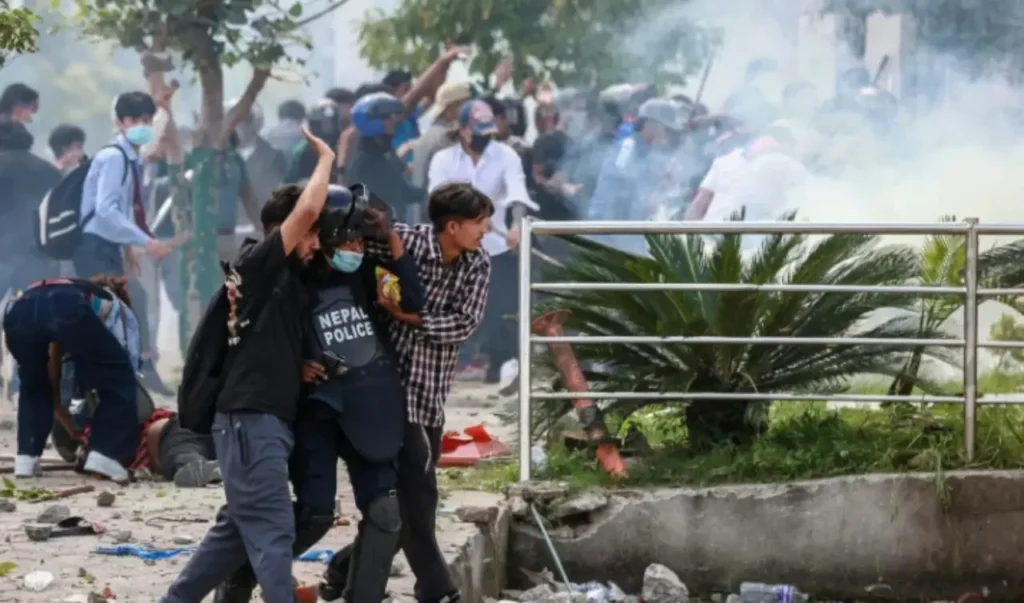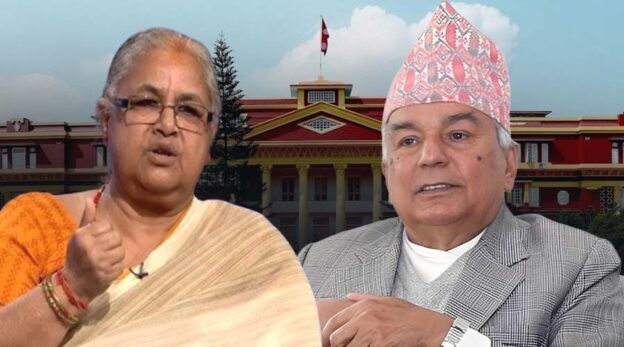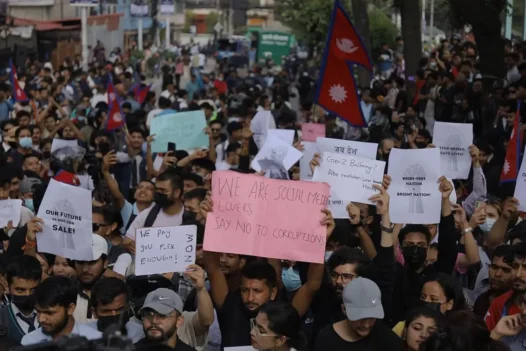On September 8, 2025, Nepal saw a breakdown that will forever mar its democratic record. What started as a spontaneous student protest against the government’s sudden move to ban 26 social media networks ended as one of the bloodiest days in the nation’s recent past.
By Monday’s late afternoon, the lanes of the Kathmandu neighbourhood of Baneshwor were as close as they get to a war zone. Hospitals were full of corpses and blood-stained visages. The corridors of emergency wards still reeked of tear gas. Families were in tears in front of trauma centers, asking for information about their children. And the young, who had gone out just to assert space, voice, and dignity—they had instead confronted the cold steel of the state.
At least 19 youths – all unarmed young people – were killed, with over four hundred injured. Of the latter, 42 were admitted in ICUs in the Kathmandu Valley. The carnage was no shock for many Nepalis but rather an eye-opener: that elected politicians in the guise of democracy would be more ruthless than the dictators they had overthrown.
The spark that triggered the flame
To outsiders, the trigger may have seemed minor. The government had announced the closure of popular platforms like Facebook, Instagram, You Tube and messenger, among others. But for Nepal’s Generation Z, digital spaces are not frivolous playgrounds. They are classrooms, job markets, creative outlets, and bridges to the world. Closing them was not seen as regulation—it was seen as strangulation.
Beneath the surface, deeper grievances had been fermenting for years. Corruption and nepotism had ensured that opportunities always fell into the laps of the powerful few while ordinary youths were left scrambling for scraps. Chronic unemployment forced thousands of graduates to migrate abroad, turning the very idea of “home” into something temporary. A sense of betrayal was everywhere: democracy had turned into a patronage bazaar for party elites, and slogans of “New Nepal” had dissolved into tired rituals of the same old rulers clinging to power.
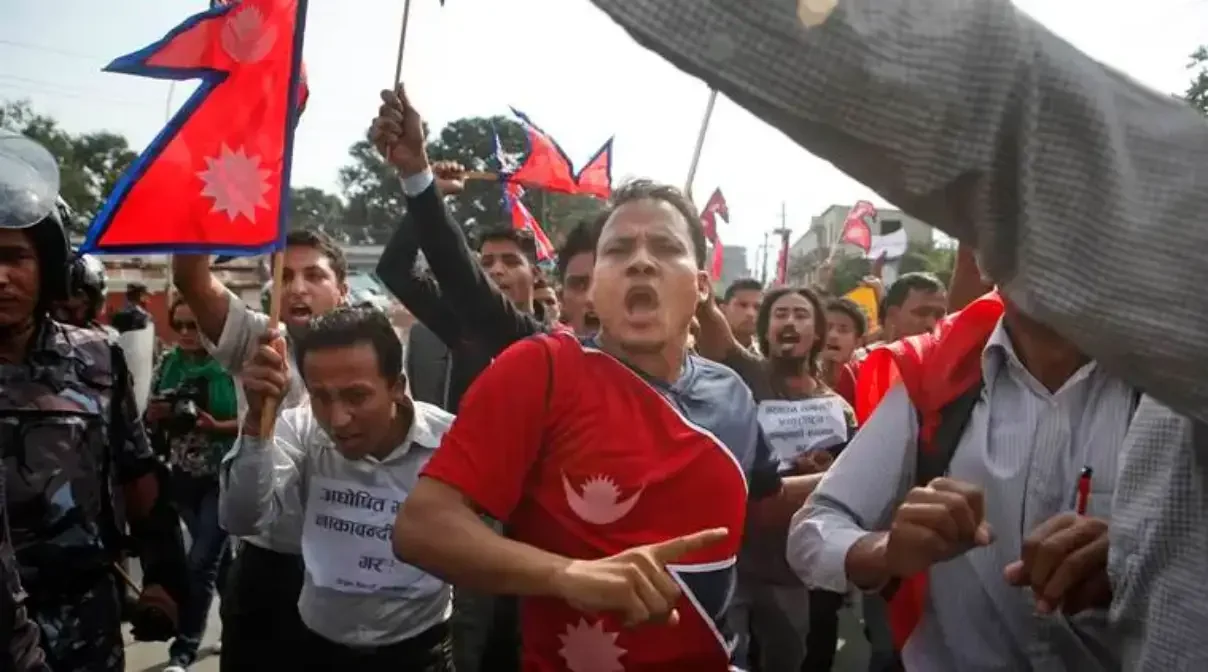
The popular satire around “baby nepo”, a phrase denoting the super lucky children of corrupt politicians living a lavish life, was never just a joke. It was a piercing commentary on how the children of leaders soared into positions of privilege while ordinary youth queued endlessly for visas, jobs, and scholarships.
Thus, when the government tried to pull the plug on digital lifelines, the dam burst. The protests were not about apps. They were about a generation suffocated by stolen futures.
The march to Baneshwar
Thousands of students assembled at Maitighar Mandala in the capital Kathmandu and started marching from there toward the Parliament building in New Baneshwar. They had even asked for official permission from the Chief District Officer of Kathmandu, who himself undervalued the event as a small gathering. Unlike previous events, this time there were no barricades, no prohibitory zones, and little security arrangement.
Video source : Contributed
The crowd grew thicker as it surged ahead. Students shouted slogans not only against the ban on social media but against decades of bad governance. Their shouting of “Down with corruption” and “End nepotism” was mingled with the louder assertion: “This is our future, not your property” By noon, the marchers had arrived at the gates of Parliament. And that is when the state lost its grip.
The bloodbath
Police initially used water cannons and tear gas. However, in minutes, the orders became more intense. Live ammunition was shot at the people from point-blank ranges as per various eye accounts and hospital reports.
“They fired at our heads, at our torsos. School children in uniform were not spared at all,” recollected a survivor, who is still undergoing treatment at Civil Hospital.
In Baneshwar only, 17 youths fell dead. Two others were killed in Itahari, which is an eastern Nepali town. Valley hospitals were scenes of pandemonium. Civil Hospital, Everest Hospital, and the Bir Hospital Trauma Center witnessed the maximum number of admissions—over 100 injured protesters each.
But the violence didn’t end at the roads. Security troops attacked Civil Hospital’s emergency wing, assaulting doctors and nurses with boots and batons, and even shooting tear gas from within. Oxygen-starved patients gasped as emergency services failed.
Civil Hospital’s medical staff stood shaken as they described the horror. “We had no beds left, no blood, no space. Then police entered and attacked us. It was terror inside a hospital.”
Outside the Trauma Center, relatives wailed, some with blood-stained school jerseys of the children. Eight were verified dead there alone.
When democracy becomes more despotic than dictatorship
More experienced Nepalis who had gone through the movement for democracy in 1989-1990 or the People’s Movement in 2006 were stunned. Security personnel had fired at protesters even during the absolute monarchy, but they had never used this intense carnage in one day. The Mallik Commission in 1990 had recorded 42 deaths over the entire country in weeks of protest. The People’s Movement II in 2006 registered only 21 deaths over 19 days.
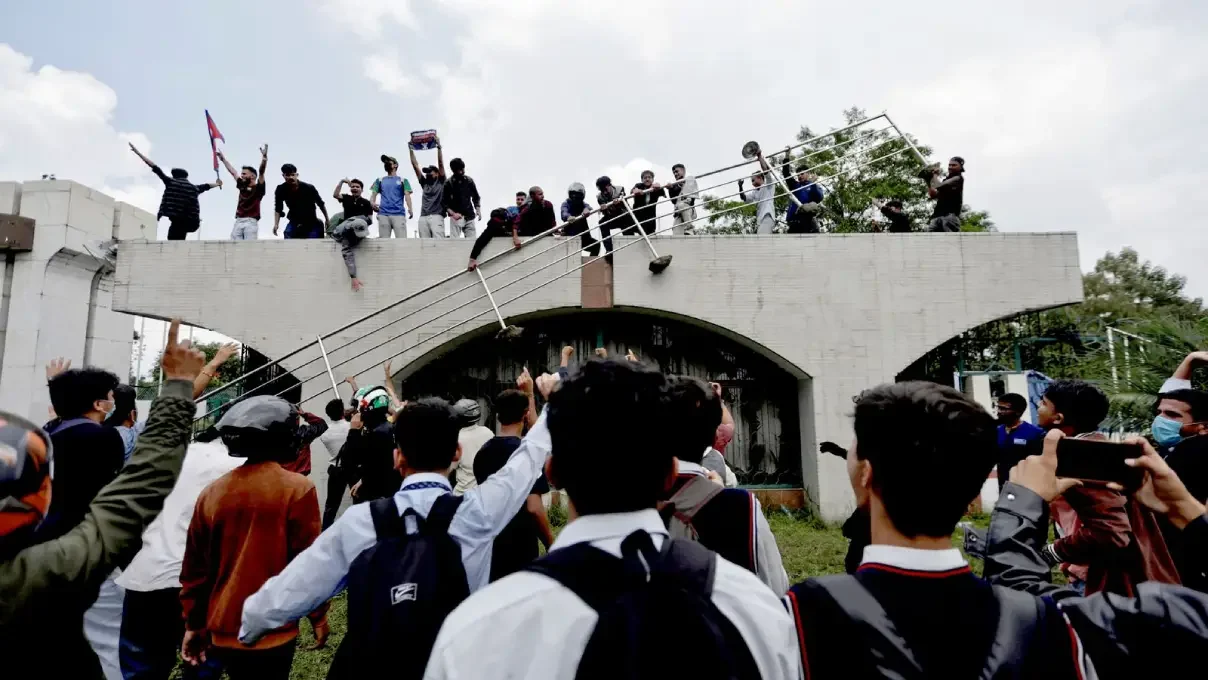
But here, with Prime Minister KP Oli and coalition partner Sher Bahadur Deuba keeping watch, 19 lives were lost within hours. On Tuesday, editorials in the newspapers were critical. They maintained that this was no governance but a crime committed at the behest of the government. They pronounced that Oli and Deuba should no longer be regarded as leaders but as culprits in the massacre. They cautioned that if monarchy was dubbed autocratic in the past, the current elected leaders were far worse—they murdered with the arrogance of assumed legitimacy.
The tragedy revealed a chilling reality: elections fail to immunise leaders against despotism. If anything, they encourage them under the pretext of popular legitimacy.
The failed security state
How did the situation get so out of hand? Security professionals later confessed to institutional breakdown. Though there were three days of web-based announcements publicising the protest, the National Investigation Department, Armed Police Force, and military intelligence did not collect any intelligence. Kathmandu’s Chief District Officer Chhabi Rijal had allowed the event but irresponsibly decided to direct live fire when protesters forced their way through the outer gate of Parliament. No preemptive barriers nor dialogue teams existed.
The young people just required being engaged, an outlet for anger. The state, however, provided bullets.
PM Oli resigns
Following the event on Monday night, Prime Minister Oli, instead of holding himself responsible, blamed “infiltrators” for instigating violence. His reaction mourned losses in the framework of the constitution at the cost of lives lost.
However, Oli resigned from his post on Tuesday after the Gen-Z movement flared up and showed no signs of receding. Instead, there are reports of the demonstrators attacking the private residences of politicians including the residence of Oli in Balkot, Bhaktapur and his coalition partner Sher Bahadur Deuba in Budhanilkantha, Kathmandu on Tuesday.
Video source : Contributed
Home Minister Ramesh Lekhak resigned on Monday itself, taking moral responsibility. The critics labeled it cosmetic, pointing out his prior controversies. The civil society was unmoved. The National Human Rights Commission condemned the use of force and demanded compensation, free medical care, and an independent investigation. The journalists’ associations protested the assault on four journalists who were covering the event. Nevertheless, no investigation or consolation was enough to erase from the thoughts of numerous families the image of their children being evacuated on stretchers.
Why Gen-Z rose up
This was no planned outburst. The Gen-Z from Nepal is a digitally networked, globally informed, and thoroughly exasperated generation. They grew up hearing the promise of the “New Nepal” in the post-2006 period but witness the same leaders clinging on to power. They witness billions being swindled in scandals—the Bhutanese refuge racket, gold smuggling scandals, and visa graft dealings—and their parents fretting over inflation. They witness the politicians’ sons and daughters flashing wealth on Instagram but ordinary graduates queueing up for Gulf labor packages.
For them, the protest was not anarchic but organic—a genuine people’s movement, unmanufactured by parties or donors. It was born of lived despair, fueled by a refusal to remain silent, and driven by a longing for dignity.
A black day in history’s chronicles
September 8, 2025, will now live alongside the darkest chapters of Nepal’s political timeline. Writers have called it a day when democracy devoured its own children. Unlike earlier uprisings that sought regime change, this revolt was about systemic accountability. The youth were not demanding to topple democracy—they were demanding its renewal. But democracy, in turn, responded with live fire.
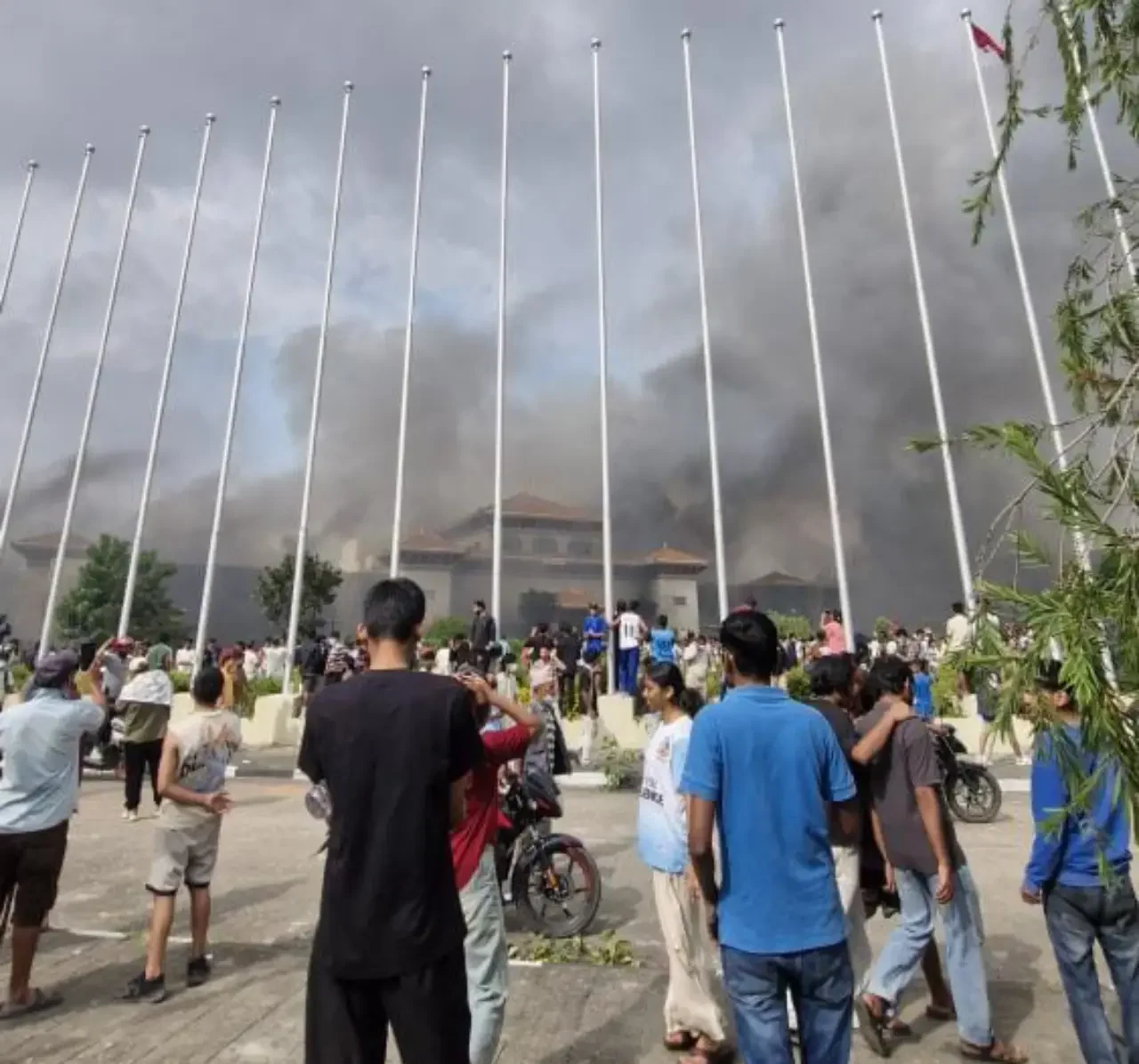
This was no law enforcement; this was a massacre. Those who gave the order are no leaders, but criminals in offices.
The future ahead
The Gen-Z revolt has left Nepal at a crossroads. The immediate repression may have silenced the streets, but it has deepened the chasm between rulers and ruled. For the ruling class, the question is stark. Do they dismiss the movement as childish chaos, or do they seize it as an opportunity for dialogue and reform? Do they keep hiding behind excuses of infiltration, or admit that a generation is demanding accountability?
For the young people, the struggle is just as definitive. They now know the price of speaking the truth to authority in Nepal. But their bravery has also redefined the political imagination of the nation. History will hopefully recall September 8 as much more than just a massacre, but the day when the nation’s youngest citizens shamed the moral bankruptcy of their elders’ politics.
Video source : Contributed
Nepal is at the precipitous point of disaster today. The blood of the 19 young people is being spilt in its streets not due to any foreign invasion nor due to the tyranny of monarchy, but owing to the elected democratic government.
The Gen-Z movement is not over. It is the collective scream of a betrayed generation, one that refuses to inherit a banana republic. The tragedy of September 8 has shown a truth long whispered: elected leaders can be despots, sometimes much more worse than kings. If Nepal’s rulers continue to ignore this, their downfall will not be at the ballot box alone—it will be written in the very anger, resilience, and memory of the youth they tried to silence.

